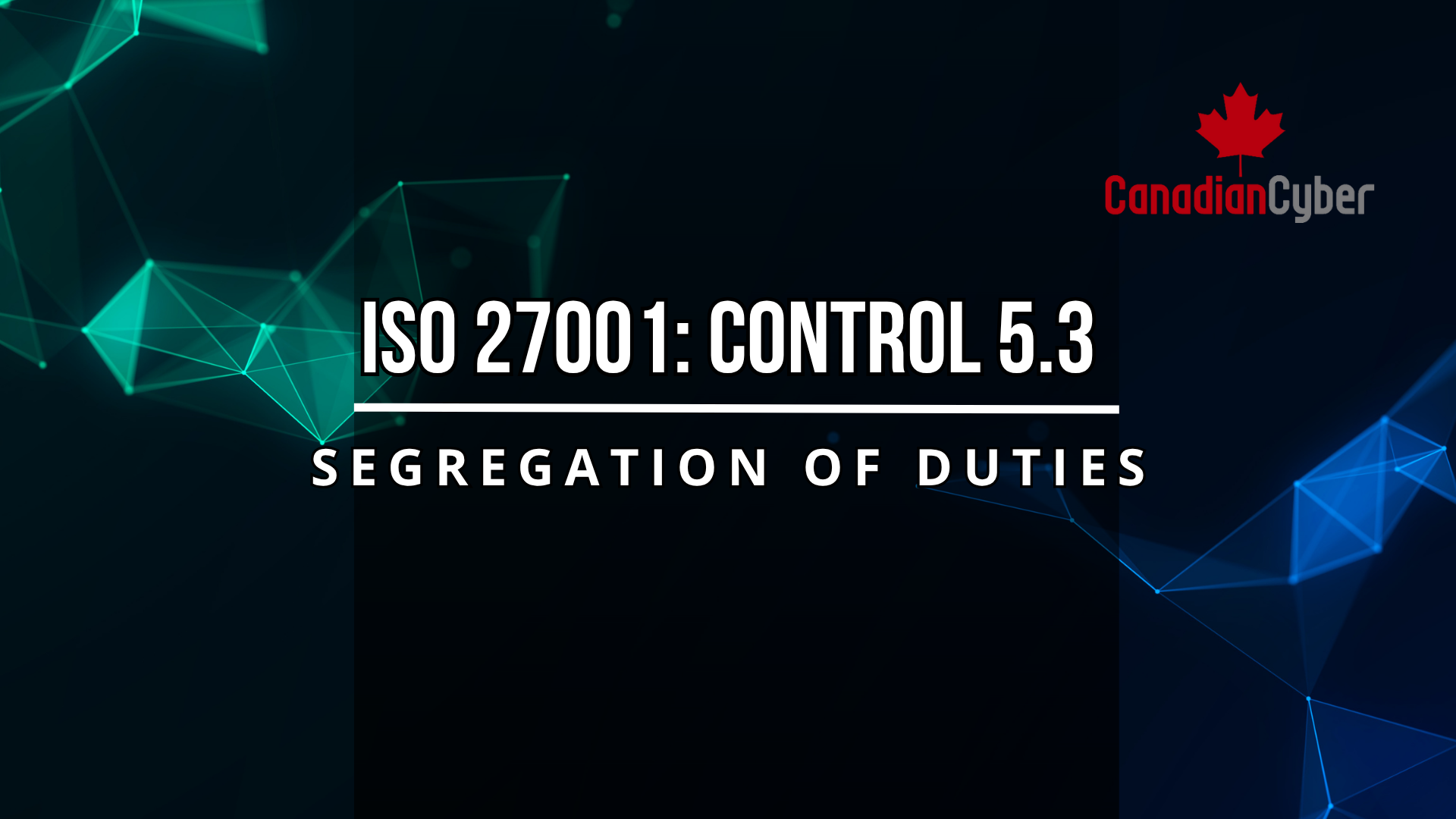ISO 27001 Control 5.3 Segregation of Duties is about keeping “checks and balances” in your cybersecurity processes. By dividing critical responsibilities, organizations reduce risks of fraud, errors, and insider threats. Canadian Cyber helps businesses design role-based access, approval workflows, and monitoring systems to meet ISO 27001 requirements and strengthen governance.

No matter how secure your systems are, a lack of clear separation in duties can open the door to fraud, error, and misuse of power. That’s why ISO 27001 Control 5.3 mandates “Segregation of Duties” ensuring no single person has too much control over critical security tasks.
Think of it as the cybersecurity version of “checks and balances.”
🔒 Control Title: Segregation of Duties
📘 Source: ISO/IEC 27002:2022, Section 5.3
🧩 Control Category: Organizational
🔍 Attributes:
To reduce the risk of unauthorized, unintentional, or fraudulent activity by dividing tasks and responsibilities among multiple people or systems particularly where critical or sensitive actions are involved.
1) Identify Sensitive Functions and Risky Tasks:
2) Split Responsibilities:
3) Use Role-Based Access Control (RBAC):
4) Implement Compensating Controls (if full segregation isn’t possible):
5) Document and Review Regularly:
Without segregation, individuals may gain too much power risking data manipulation, fraud, or even sabotage. Segregation helps reduce the chance of insider threats and improves transparency across processes.
This control is especially critical for:
At Canadian Cyber, we often help clients restructure their security responsibilities to enforce proper checks and balances. Whether it’s your access management process, DevOps pipeline, or approval workflows we make sure duties are clearly divided and technically enforced.
Let’s implement role-based access, approval workflows, and monitoring systems to reduce risk and meet ISO 27001 requirements.
👉 Click here to speak with our compliance consultants.